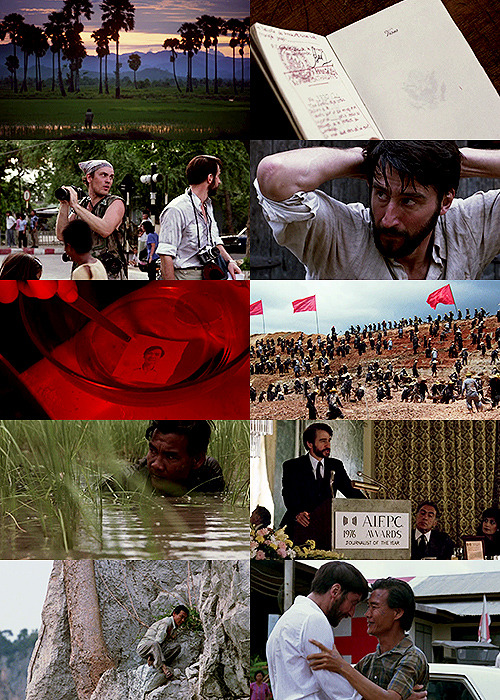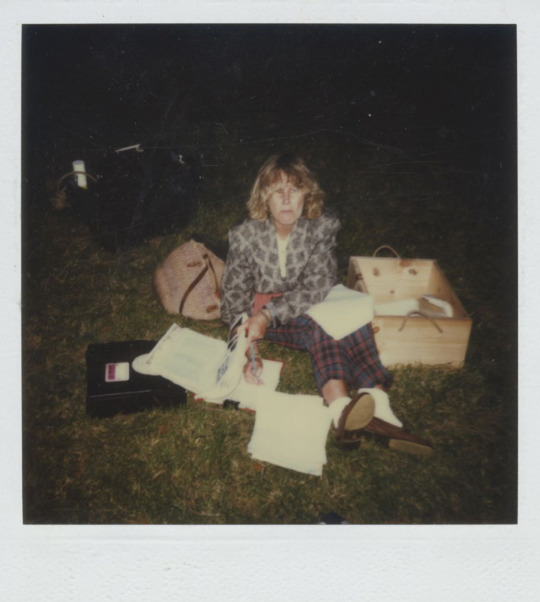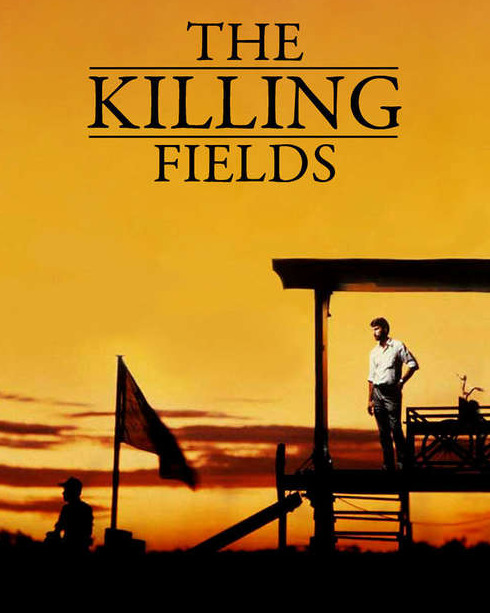#the killing fields
Explore tagged Tumblr posts
Text


This is Round One!
Make sure to vote on every other poll. 7 of the Round One polls will be released a week
#1984#movie#movies#the killing fields#star trek#star trek iii#star trek iii: the search for spock#spock#cambodian civil war#cambodia
15 notes
·
View notes
Text






Sam Waterston memes for the soul
17 notes
·
View notes
Text

The Killing Fields (1984). A journalist is trapped in Cambodia during tyrant Pol Pot's bloody 'Year Zero' cleansing campaign, which claimed the lives of two million 'undesirable' civilians.
There's a lot to like in this harrowing film about the Khmer Rouge regime in Cambodia, from the friendship between Sydney Schanberg and Dith Pran's to the sublime cinematography. I particularly appreciate the way the film used the American journalism angle as an entry point but stayed with Dith's journey in Cambodia afterwards. It felt almost like a way to trojan horse a broader audience into the story, and it's particularly compelling given that act is by far the strongest of the film. Pretty solid, albeit also pretty flawed. 7/10.
#the killing fields#1984#Oscars 57#Nom: Picture#Nom: Director#Nom: Actor#Nom: Supporting Actor#Won: Supporting Actor#Nom: Adapted Screenplay#Nom: Cinematography#Won: Cinematography#Nom: Editing#Won: Editing#Roland Joffé#bruce robinson#sam waterston#haing s ngor#john malkovich#american#cambodia#journalism#war#7/10
15 notes
·
View notes
Text
The Killing Fields

Los gritos del silencio
3 notes
·
View notes
Photo

John Owen famously wrote, “Be killing sin, or sin will be killing you.”
6 notes
·
View notes
Text




Penny Eyles
The Killing Fields, dir. Roland Joffé, 1984.
#penny eyles#the killing fields#roland joffé#script supervisor#scripte#continuity#continuité#behind the scenes#film making#film crew#movie making#movie set
2 notes
·
View notes
Text

The Killing Fields
[ Roland Joffé • 1984 ]
3 notes
·
View notes
Text

The Killing Fields directed by Roland Joffe
3 notes
·
View notes
Text
'LONG before Cillian Murphy there was Sam Waterston, and long before Christopher Nolan’s Oppenheimer there was Peter Goodchild’s Oppenheimer (BBC4, Friday), which is being reshown for the first time in decades.
Goodchild, who was interviewed by Variety last month to coincide with the film’s release, started his BBC producing career in radio drama and later moved to television with the science documentary series Horizon.
When Horizon diversified into science docudramas in the 1970s, Goodchild, who holds a chemistry degree, got to combine his two interests in a successful series about Marie Curie.
It was his idea to make a seven-part miniseries about J Robert Oppenheimer, the father of the atomic bomb, played by Waterston. First shown on BBC2 in 1980, Oppenheimer was a big hit with viewers and critics, winning three Bafta awards. It also garnered Emmy and Golden Globe nominations after it was shown on PBS in the United States.
The budget of £1.5m (about €7.5m today) – 90pc of it coming from the BBC, the rest from WGBH Boston – might seem like a grain of New Mexico sand compared with the £100m price tag of Nolan’s Imax epic.
Back then, however, it was a huge spend for a British drama.
A huge physical production, too, with scrupulous attention to detail. For maximum authenticity, Goodchild, now 83, told Variety, the Manhattan Project’s Los Alamos Laboratory was recreated on a purpose-built set in Colorado Springs, complete with water tower and replica bomb.
The supporting cast was made up almost entirely of American actors based in Britain.
Two notable exceptions were future Poirot star David Suchet as the excitable, voluble Hungarian physicist Edward Teller and Edward Hardwicke (Dr Watson to Jeremy Brett’s Sherlock Holmes) as his Italian colleague Enrico Fermi.
Viewers who have grown used to watching even modestly budgeted dramas shot on HD video that mimics celluloid film may find the switch from Oppenheimer’s interior scenes, which were mostly shot on videotape in a studio in the UK, to the ones shot on film in America a little jarring at first.
But the story is so engrossing you cease to be aware of the contrast after a while.
What’s remarkable is how well Oppenheimer, which was written by Peter Prince and directed by Barry Davis, holds up 43 years later.
There’s none of the slowness or staginess you sometimes see in dramas from the period. Friday’s opening two episodes positively zipped by.
They spanned the years 1938, when Oppenheimer was at the University of Berkley, to 1942, when Lieutenant General Leslie Groves (Manning Redwood), ignoring warnings about Oppenheimer’s long associations with active communists and championing of left-wing causes, put him in charge of the Manhattan Project, which was to be housed in a high-security facility in Los Alamos.
Waterston, just four years ahead of his best actor Oscar nomination for playing Siydney Schanberg in The Killing Fields, is fantastic as Oppenheimer.
You can see why the BBC was prepared to pay him well above the normal rate for appearing in one of its dramas and to put him up in a luxury hotel during filming.
He conveys Oppenheimer’s charisma, intelligence, brilliance and charm, especially to women.
But we also see his ruthlessness and arrogance.
When we meet him, he’s romantically involved with psychiatrist and communist Jean Tatlock (Kate Harper), who suffered from clinical depression (she died by suicide in 1944), yet thinks nothing of casting her aside when he sets eyes on his future wife Kitty Puening (Jana Shelden), who at that time is married to someone else.
They tumble into an affair. In one particularly cruel moment, he humiliates Jean by turning up at a dinner party at her home with Kitty on his arm.
Even at this stage, the seeds of Oppenheimer’s downfall are being sown. Naively unconcerned about the dangers of having communist friends, he doesn’t realise he’s already under FBI surveillance.
A terrific drama from a far more creative age of TV.'
#Oppenheimer#Sam Waterston#Kate Harper#Peter Goodchild#Cillian Murphy#The Manhattan Project#Los Alamos#David Suchet#Edward Teller#Enrico Fermi#Edward Hardwicke#Manning Redwood#Leslie Groves#The Killing Fields
3 notes
·
View notes
Text

The Killing Fields (1984)
1 note
·
View note
Text
Just finished watching Killing Fields with my father and Cambodian step mother.
The original point of watching this movie was to see the Cambodian point of view for a ducking presentation.
I’m still crying and I can’t fucking stop.

3 notes
·
View notes
Text
The Killing Fields (1984)
Gazetaria është një profesion fisnik në mbrojtje të së vërtetës dhe kumtimit të saj te sa më shumë njerëz, njoftimin e tyre me faktet që provojnë të shtypen nga ata që manipulojnë me të vërtetën dhe masat. Fatkeqësisht, te ne kemi pak e shumë pak gazetarë të vërtetë. Kryesisht janë biznesmenë që shtiren si gazetarë dhe duan të mbrojnë veprimtarinë e tyre biznesore të kultivuar nga rrenat dhe…
0 notes
Text
youtube
0 notes
Text

The Life of Buranee Rachjaibun - Bangkok Post's themagazine - Issue 113 - 10 April 2008
https://1drv.ms/b/c/ca0e5bb9b4202e3f/Ead57oW2xGVDsfbVv_8KCQ0BplyYe1-d079GxuCUiD83_g?e=gIBPUl
0 notes
Text
aubrey st angelo from the tv series ‘the killing fields’ please save me
#aubrey st angelo#the killing fields#i’ve liked him since i was like 15#also it’s my DREAM to move to louisiana
0 notes
Text

Mike Oldfield The Killing Fields 1984 Virgin ————————————————— Tracks: 01. Pran’s Theme 02. Requiem for a City 03. Evacuation 04. Pran’s Theme 2 05. Capture 06. Execution 07. Bad News 08. Pran’s Departure 09. Worksite 10. The Year Zero 11. Blood Sucking 12. The Year Zero 2 13. Pran’s Escape • The Killing Fields 14. The Trek 15. The Boy’s Burial • Pran Sees the Red Cross 16. Good News 17. Etude —————————————————
Mike Oldfield
* Long Live Rock Archive
0 notes